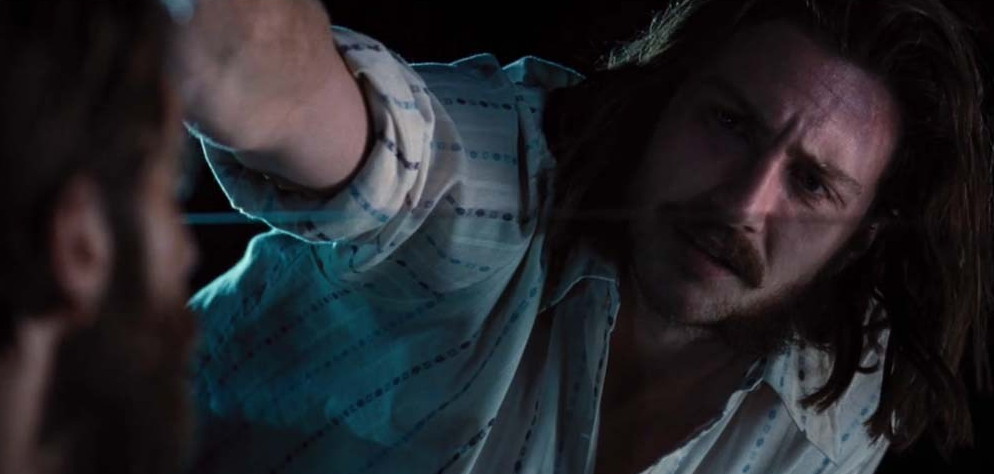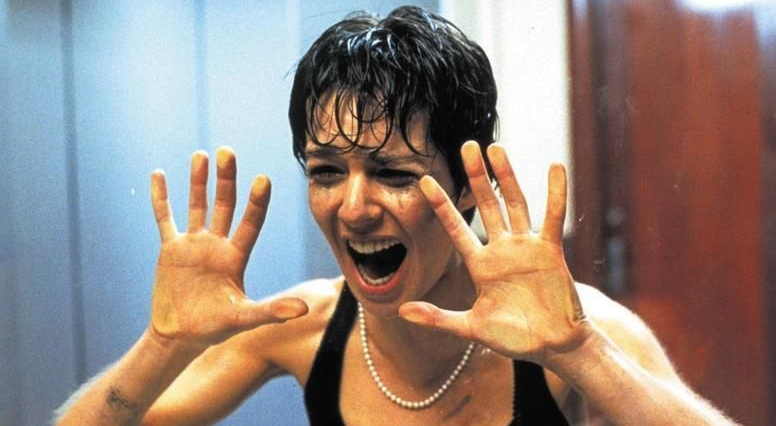2008 was another peculiar Oscar year, and literally a game-changer it would turn out wit regards to the way Best Picture would go thereafter. Slumdog Millionaire was a great story and great movie, but whether or not it deemed the domination of eight Oscar wins is a debate. The Curious Case of Benjamin Button had the most nominations, and was the least Fincher movie he has ever made – what does that tell us about what the Academy think of him? The Dark Knight was famously not nominated for Best Picture, even though they clearly liked it. What happened instead was the rather dour The Reader – sadly the last movie that involved Anthony Minghella and Sydney Pollack, who had recently died. That, and The Damn Weinstein Company, go a long way to explain the film’s late surge rather than the quality of the movie itself. On a brighter note, let’s start this chapter with two very different space adventures somehow missing from contention in the top prize.
Picture — Wall-E 2008 — Robin Write
I will always bang the animation drum. Some, don’t get me wrong, are pretty formulaic stuff, but often they are right up there in the top tier of movie entertainment. As an audience member you don’t need to think about the man hours that go into creating a feature length animated movie, you can just sit and watch and be swept up. Wall-E has so much to say about the society and world we live – how we may end up, or the way we are now, and where we’ve been. More than that though it is a true love story. The movie never had a chance for acting nominations, and likely a small shot with Andrew Stanton making Director. That said, it had six nominations, and was well liked by many. The lack of a Best Picture nomination for this (and a few others) is not about the quality or any publicity, it is about a certain low level of respect for the genre, as well as the lack of balls.

Picture — 2001: A Space Odyssey 1968 — Steve Schweighofer
1969 was another year for which Oscar should hang his little golden head in shame. Both Kubrick’s masterpiece and Pontecorvo’s Battle of Algiers, considered to be two of the greatest films ever made, were eligible for the major awards, but were tossed crumbs in nearly all categories except directing and writing. 2001 not only missed out on a Best Picture nod, it won just a single Oscar (Visual Effects). As well, that year Oscar decided to bestow a special award for ape make-up – not to the more realistic ape-men in 2001, but to the rubber-masked Hollywood Halloween job in Planet of the Apes. The awards didn’t go any better – Oliver! (or, as I like to call it, the Best Film of 1943) cleaned up, then went on to become one of the most forgettable winners in Oscar history. Romeo & Juliet, Bullitt, Rosemary’s Baby, The Lion in Winter, Faces and the aforementioned Battle of Algiers and 2001:A Space Odyssey had to settle for relegation to the immortal status as “classics.”

Director — Tomas Alfredson (Let the Right One In) 2008 — Robin Write
Swedish director Tomas Alfredson has broken some extraordinary ground with Låt den rätte komma in (Let the Right One In). Creating a cinematic love story, you might say, between children, as one bullied eleven year-old boy (Kåre Hedebrant) is befriended by a girl his own age (Lina Leandersson) who happens to be a vampire. Alfredson’s vision in executing such a rare gem is both extremely composed and beautiful to look at. Perhaps a snow-filled small-town landscape of melancholy and mystery has never looked so good. There are sequences of such style and grace too which you likely don’t see elsewhere – including an iconic climax in a swimming pool that simply has to be seen for it’s shock and aesthetic value.

Supporting Actor — Aaron Taylor-Johnson (Nocturnal Animals) 2016 — Bianca Garner
Nocturnal Animals came and went with little interest from the Academy in 2016. It still remains a mystery to me, why this film hasn’t received more praise. Perhaps because it addresses some ugly issues which are still taboo in society. That it doesn’t pander to the ideology that men can’t be victims. That the film presents with a post modern America that has lost it’s sense of identity, where art and beauty has lost it’s meaning. Perhaps Nocturnal Animals is so under appreciated because it confirms our worst fears, that there’s is a generation of lost men who are labelled as animals so they submit to their inner desires. It was very difficult just choosing one actor in Nocturnal Animals, but it was Aaron Taylor-Johnson who really stole the show as redneck Ray. Taylor-Johnson really embraces the “villain” character- it would be easy to fall into the trap of giving an almost pantomime, traditionally over the the top bad guy, but what Taylor-Johnson gives us is a very disturbing and unsettling portrayal of a man who is far too used to blending into society. He is the type of man who really exists; he’s charming, friendly but can effortlessly turn on his prey in the blink of an eye. He’s not your average redneck monster, he’s not stupid or deformed in any physical way. He’s our worst nightmare, because our monsters are not meant to look that way or be that charming. And that’s why Aaron Taylor-Johnson deserved praise for his performance, it was a role that could have ever so easily been forgotten but he made it his own, however he wasn’t nominated for an Oscar, which is the greatest crime of all.

Leading Actress — Anne Parillaud (Le Femme Nikita) 1990 — Robin Write
Ferocious, sympathetic, evolving, an absolute powerhouse of a performance by Anne Parillaud as the assassin of the title in Luc Besson’s adrenaline ride Le Femme Nikita. Plucked from a basket of low-life, amateur crooks, Nikita undergoes a whole government make-over, forced to take up killing professionally. Parillaud is like a volatile, tame animal surrounded by different breeds of wild beasts in her varying transitions of criminal activity, yet she gives Nikita a fiery intuition and survival reflex that has inspired more female-centric roles of the aggressive, self-defending nature than you might know.
Comments welcome below.











Recent Comments